2020 Toyota 4Runner Review & Buying Guide | A relic gets updated
https://ift.tt/2RUANt0
Mechanically, the 2020 Toyota 4Runner is pretty much the same truck that debuted a decade ago. For better, that means it has the rugged body-on-frame chassis, capable suspension, ample clearances and sterling reliability that have made the 4Runner a darling of off-roaders everywhere (or just folks who want to look the part, which is cool, we won’t judge). The boxy body and abundant interior space have stood the test of time as well.
For worse, though, the carry-over engine has less power than a V6 Camry, the transmission has five (!) fewer gears than a Ford Explorer’s, and to call the on-road handling “imprecise” would be an understatement. It even gets worse with the TRD Pro’s all-terrain tires. Yet, the “for worse” list gets much smaller for 2020 as the 4Runner adds a multitude of much-needed infotainment and safety tech advancements. Although none are unique, they nevertheless eliminate reasons why you might’ve passed on the 4Runner before (or bought a used one instead). Instead, you’re left to determine whether you’re willing to live with the performance, fuel economy, on-road handling and interior noise tradeoffs. Admittedly, they’re common for any off-road-oriented SUV but are also reasons why someone might want to consider a crossover like a Jeep Grand Cherokee or Honda Passport instead.
What’s new for 2020?
Every 4Runner now comes standard with accident avoidance technologies – they were previously unavailable. The standard touchscreen has grown to a more conventional 8 inches while bringing with it Android Auto, Apple CarPlay and Amazon Alexa capability. There are also a pair of rear seat USB ports and most trims get another previously unavailable features: proximity entry and push-button start.
That’s not all for 2020, however. There’s a new Venture Edition that adds darkened exterior trim, unique wheels and a Yakima roof rack to the TRD Off-Road Premium. Finally, the TRD Pro trim loses its Voodoo Blue color option (boo!) but gains Army Green for 2020 (yay!).

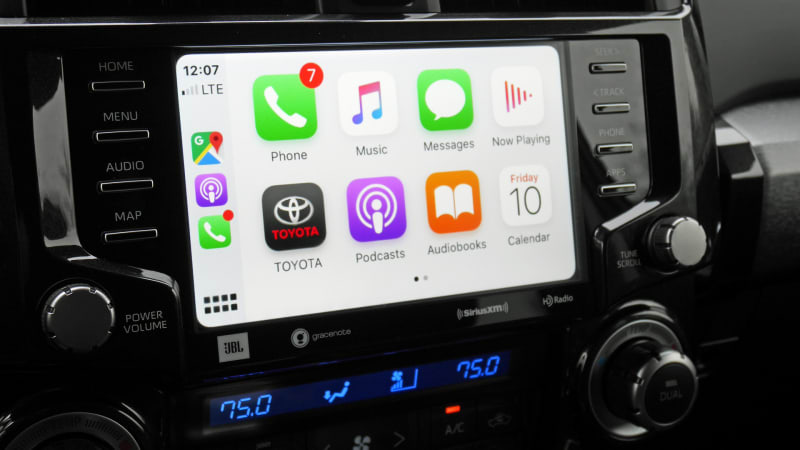
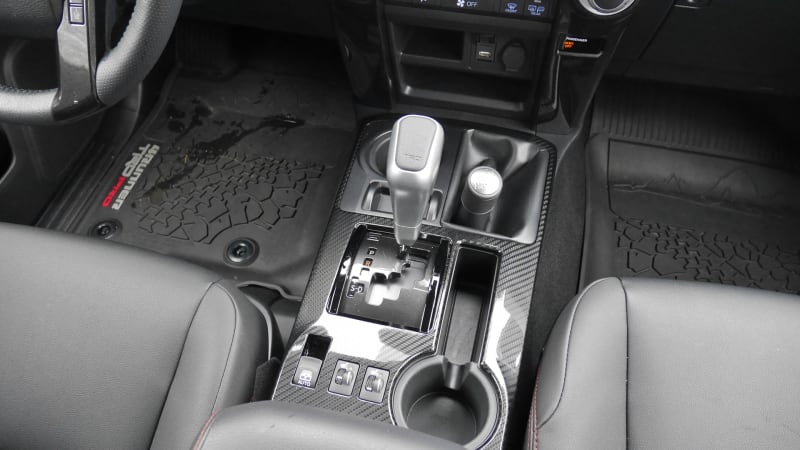 Photos by James Riswick
Photos by James Riswick
What’s the 4Runner’s interior and in-car technology like?
The standard touchscreen grows nearly 2 inches for 2020, which makes a massive difference. It’s easier to read and use as a result, while further benefiting from Apple CarPlay and Android Auto. Admittedly, that’s nothing special these days, but their omission and the rinky-dink old screen were major reasons the 4Runner seemed so antiquated before.
Now, it just seems antiquated because of a blocky design that dates back a decade and plastics that probably shouldn’t be in a vehicle that can cost more than $50,000. A RAV4 is nicer in some places. The various small bins and cubbies are also just a little too small for modern devices having clearly been designed when we carried around flip phones and iPods. There’s even old-school switchgear like the roller heated seat controls and the one-blink-only turn signal that constantly remind you of its age.
Nevertheless, it’s all put together quite well, controls are logically placed and there’s certainly something to be said for a rugged off-road vehicle that has a rugged interior.

 Photos by James Riswick
Photos by James Riswick
How big is the 4Runner?
Here is an area where the 4Runner is perfectly fine as-is. The cargo area floor is quite low for a truck-based SUV, while the space beyond is big, boxy and a whopping 47.2 cubic feet. Even when you add the novel slide-out cargo floor that reduces capacity, there’s still a gigantic amount of space. We know, we filled it up. Maximum cargo capacity with the back seat lowered is 89.7 cubic feet, which rivals many three-row crossovers (the Highlander has only 84.3), and surpasses the Jeep Grand Cherokee (68.3) and Honda Passport (77.9).
There’s also the 4Runner-trademark power rear window that allows you to secure long items like surf boards or lumber out the back while keeping the rest of the liftgate closed. It also allows for freer airflow in the cabin, and dogs typically love it as well (that big boxy area in general is dog friendly).
Human legroom is quite good all around. The standard power driver seat offers plenty of adjustment, while the back seat is mounted at a nice height and reclines to an almost absurd degree. That said, headroom can be a bit tight up front should you opt for the sunroof. There’s a third-row seat available, but its space is extremely limited and it reduces cargo space. Really, if you want a third-row seat, crossovers like the Kia Telluride or Subaru Ascent would be a better family-hauling choice.

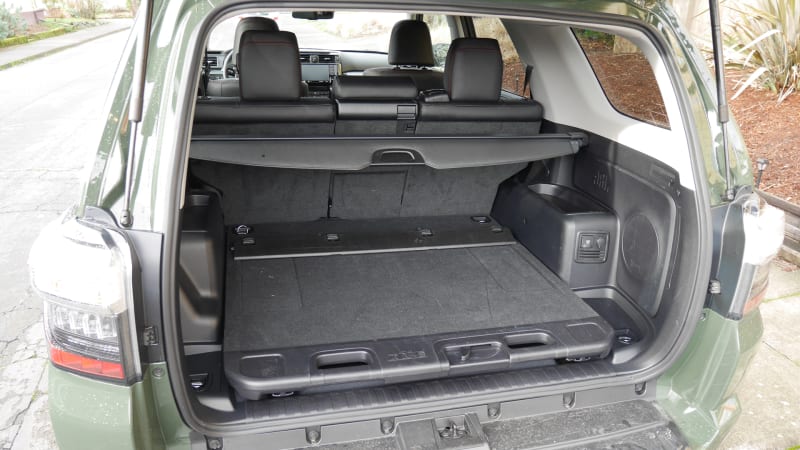
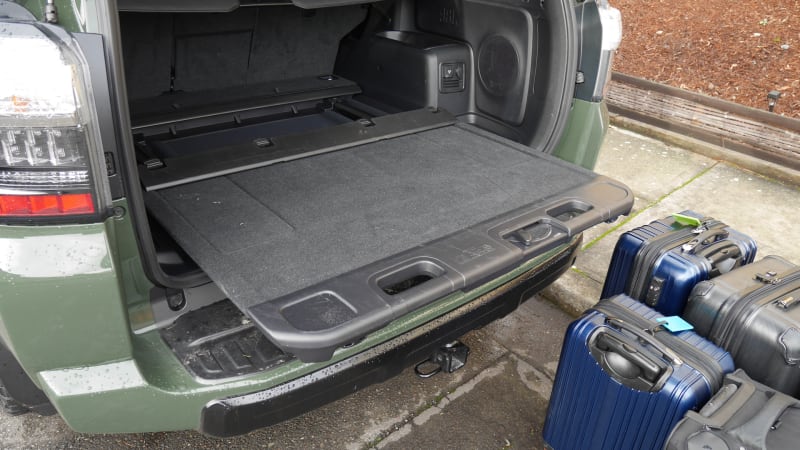
 Photos by James Riswick
Photos by James Riswick
What’s the 4Runner’s performance and fuel economy?
The 4Runner is only offered with a 4.0-liter V6 that produces 270 horsepower and 278 pound-feet of torque. That’s not a lot given how much the 4Runner can weigh (especially the TRD Pro) and the fact that the lighter Toyota Highlander produces more than 300 horsepower. As such, the 4Runner is quite slow, and it’s not helped by a standard five-speed automatic transmission that does it no favors in terms of fuel economy.
With optional four-wheel drive, the 4Runner returns 17 mpg city, 20 mpg highway and 18 mpg combined. Standard rear-wheel drive only nets an extra 1 mpg on the highway. However, you can expect the TRD Pro to get even worse fuel economy due to its off-road tires, heavier weight and blunter aerodynamics. We averaged 17 mpg in about 250 miles of highway driving in a TRD Pro and saw the low teens around town.
The optional four-wheel drive system provides high and low range, selected with a traditional shifter on the center console on most trim levels. The Limited, however, utilizes a knob. It also includes a locking center differential.
Despite its rugged body-on-frame construction, every 4Runner’s towing capacity is only 5,000 pounds.
What’s the 4Runner like to drive?
Terrible. And also awesome. It really depends on how you look at it. Should you compare the 4Runner to another midsize SUV like the Honda Passport, you’ll find this rugged Toyota to be slow and noisy, with ponderous handling that actually gets worse when you opt for a more off-road-oriented model (the all-terrain tires make the steering in particular sloppy and vague). On the other hand, should you compare it to a Jeep Wrangler or older truck-based SUVs, the 4Runner will be quiet, comfortable and handle surprisingly well. It’s shockingly civil for such a rugged vehicle, and indeed, actually much closer to the Passport than the Wrangler in terms of its on-road demeanor – especially its ride quality. At the same time, it’s much slower than both.
Off-road, the 4Runner is a monster, and you don’t have to get the top-of-the-line TRD Pro (pictured above) to realize its potential. The TRD Off-Road (see below) will do the job just fine, as it too has massive ground clearance, 4WD Hi and Lo, a locking rear differential, Toyota’s Multi-Terrain Select system, Crawl Control (essentially a low-speed cruise control for getting out of especially tricky off-road situations) and offers the optional KDSS disconnecting sway bars that improves both off-road wheel articulation and on-road handling. The latter actually aren’t available on the TRD Pro, which only ups the ante slightly with upgraded shocks and tires. Then again, it does offer unique colors and styling, which may ultimately be its greatest appeal.
What more can I read about the Toyota 4Runner?
Engineer Dan Edmunds takes you under the 4Runner for an in-depth look at how the TRD Off-Road and the KDSS suspension option does what it does.

Here’s another deep dive of a different variety. We find out just how much you can stuff into the back of the 4Runner while also testing the optional pull-out cargo tray.
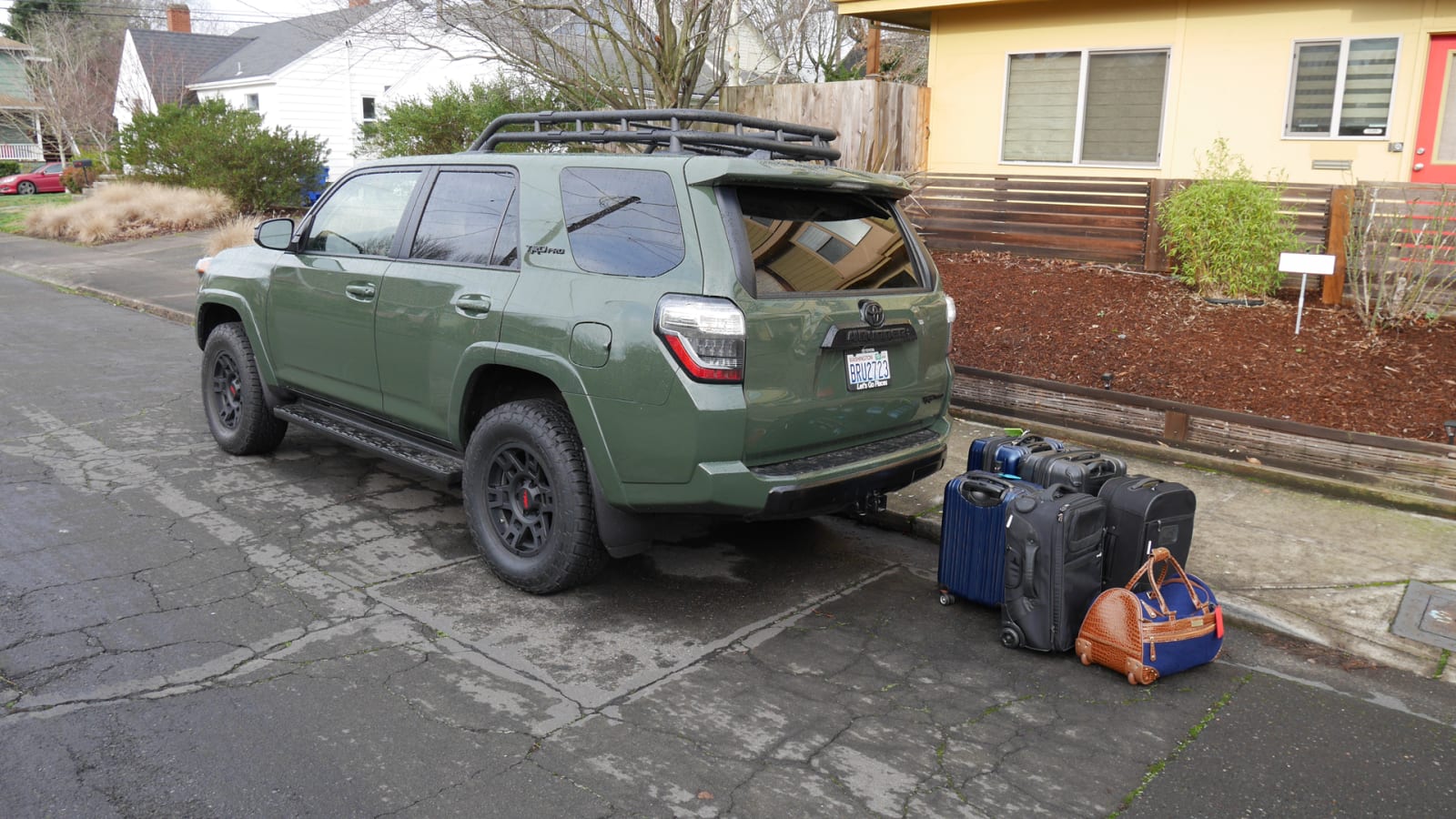
We test the TRD Off-Road Premium, which is pretty much the sweet spot in the lineup.
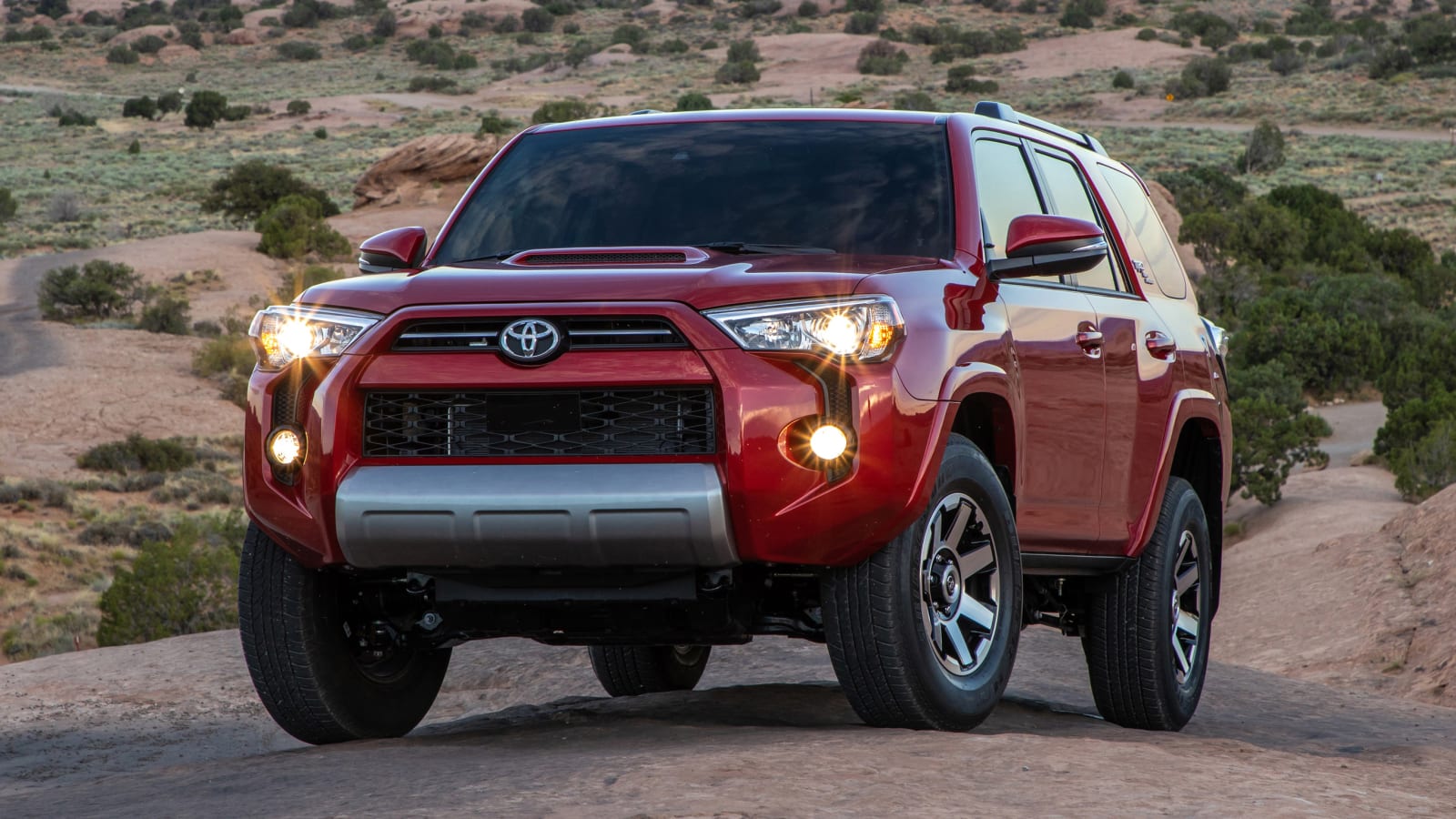
We give the revised 4Runner a thorough workout in Moab, Utah.
What features are available and what’s the 4Runner’s price?
The 2020 4Runner starts at $37,240, including destination, for the base SR5 with rear-wheel drive. The 4×4 SR5 models are an extra $1,875. Notable standard features include 17-inch alloy wheels, foglights, a windshield wiper de-icer, rear privacy glass, skid plates (4×4 models), adaptive cruise control, accident avoidance tech (see safety section), an eight-way power driver seat, 40/20/40-split reclining and folding back seat, cloth upholstery, a leather-wrapped steering wheel, power rear liftgate window, a 100W house-style outlet, three USB ports, an 8-inch touchscreen, Apple CarPlay and Android Auto, Amazon Alexa compatibility, satellite radio and an eight-speaker sound system.
The TRD Off-Road ($40,960) is equipped similarly but adds standard four-wheel drive, a locking rear differential, wider tires, Multi-terrain Select off-road settings, Crawl Control (a sort of off-road cruise control), and different exterior trim. The KDSS suspension upgrade is exclusive to the TRD Off-Road trims.
From there, the SR5 Premium ($40,435) and TRD Off-Road Premium ($43,690) add proximity entry and push-button start, more easily cleaned SofTex vinyl upholstery, heated front seats, and a few extra infotainment features. The TRD Off-Road Premium also gains a sunroof, and can be upgraded as the Venture Edition (pictured below) that features black exterior trim, gun-metal-colored TRD wheels and a Yakima roof rack.
At this point, things diverge. The Limited ($46,105) and Nightshade ($47,845) are more luxury-oriented versions of the 4Runner that gain 20-inch wheels, a limited-slip center differential (4×4 models), the X-REAS “sport enhancement suspension,” fancier exterior trim (chrome on the Limited, black on the Nightshade), dual-zone auto climate control, leather upholstery, heated and ventilated front seats, a four-way power passenger seat, HD radio and a JBL sound system. Adding four-wheel drive to these is $2,035.
Then there’s the TRD Pro that adds to the TRD Off-Road Premium equipment Fox shocks, TRD-tuned front springs, a TRD cat-back exhaust (it’s loud and annoying), a huge roof rack, LED foglights, 1/4-inch thick front skid plate, unique styling, 17-inch matte black wheels, Nitto Grappler all-terrain tires (they make the steering worse), special floor mats and the JBL sound system (it isn’t very good). This is also the only trim available in Army Green.
You can find a full breakdown of features, specs and local pricing here on Autoblog.
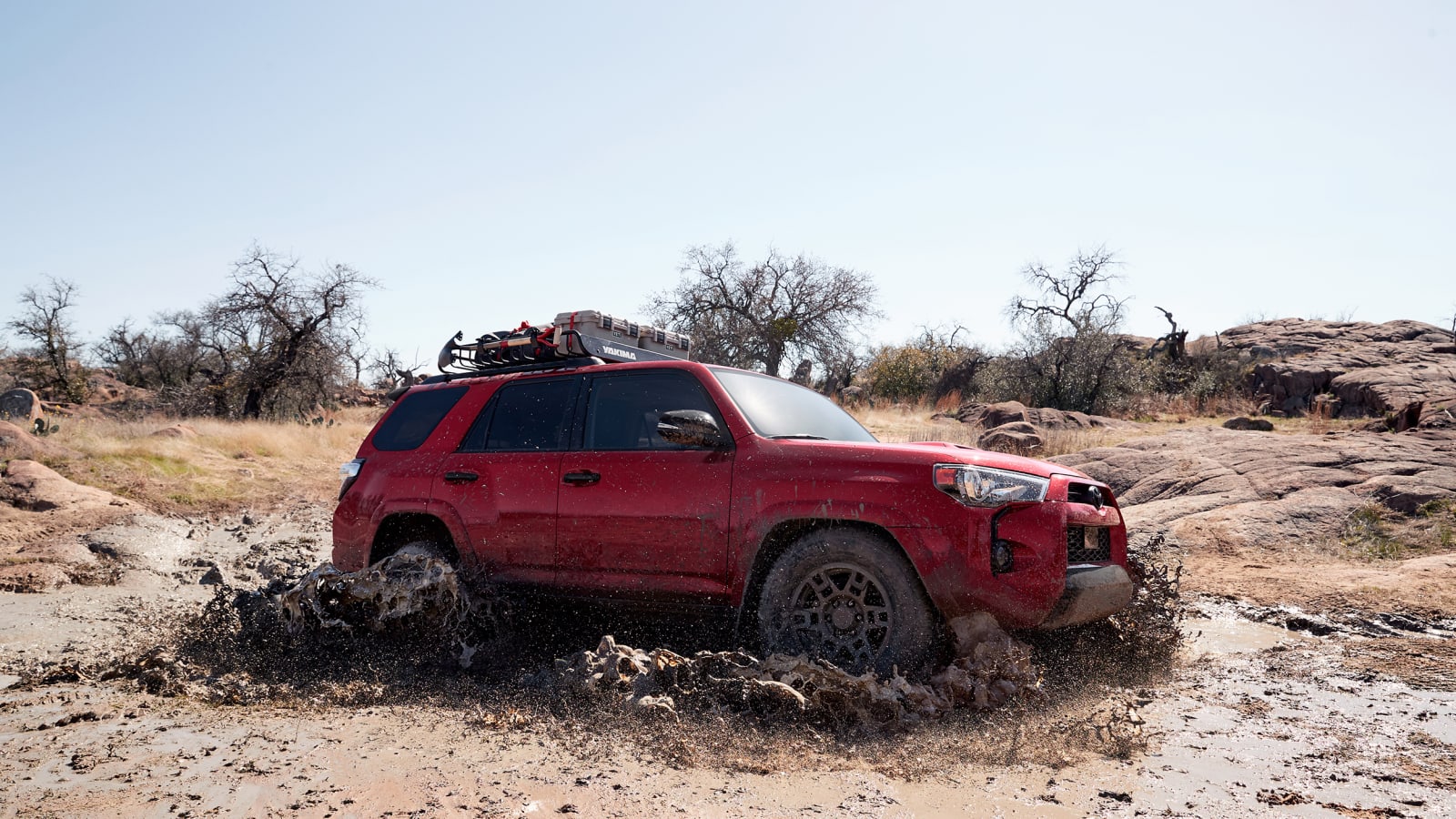
What are its safety equipment and crash ratings?
Besides ABS and eight airbags, every 2020 4Runner comes standard with forward collision warning with pedestrian detection and automatic emergency braking, lane-departure warning, and automatic high beams. Blind-spot warning still isn’t available.
In government crash tests, the 4Runner received four out of five stars for overall and frontal crash protection, five stars for side protection and a three-star rollover rating. The Insurance Institute for Highway Safety gave it the best-possible rating of “Good” in all crash categories except the newest “small overlap front: driver side” category where it got a second-worst “Marginal.” This isn’t surprising given that the 4Runner was engineered long before this test was devise and manufacturers were obliged to design crash structures to accommodate it. The headlights were also given a rating of “Poor,” which also isn’t surprising as we have driven it at night and can concur they aren’t great. An LED option would be nice.
Related Video:
Auto Blog
via Autoblog https://ift.tt/1afPJWx
February 3, 2020 at 11:42AM